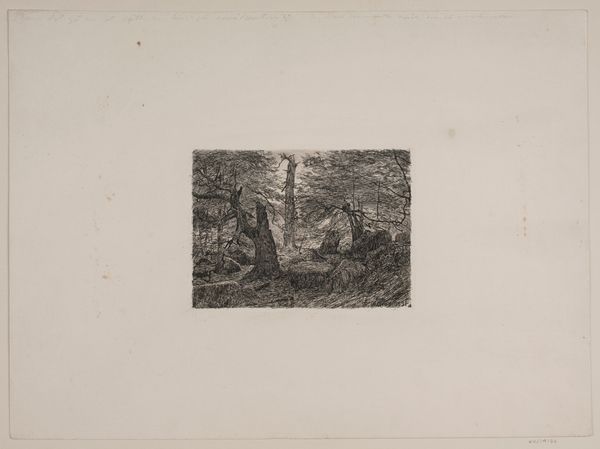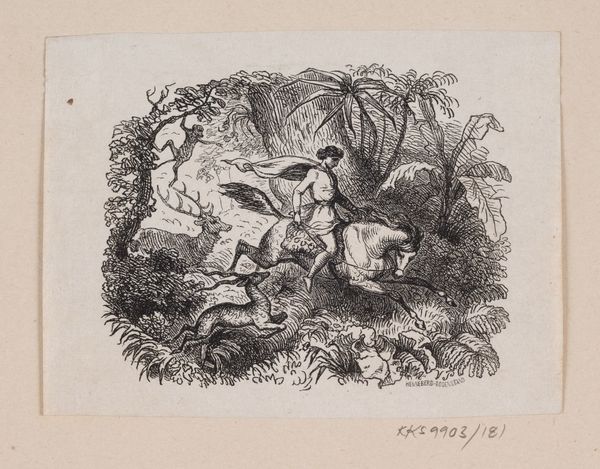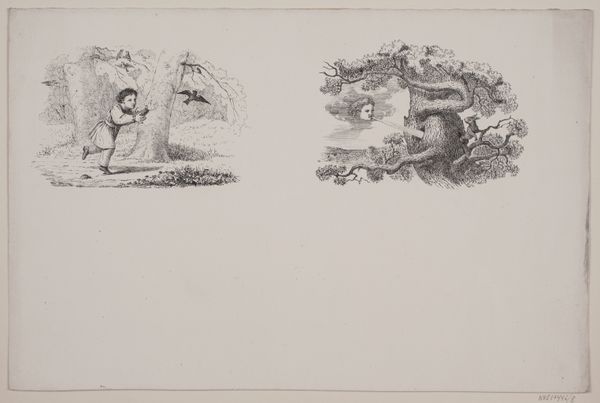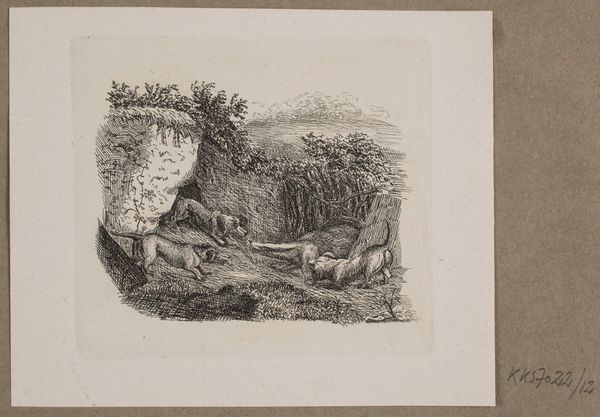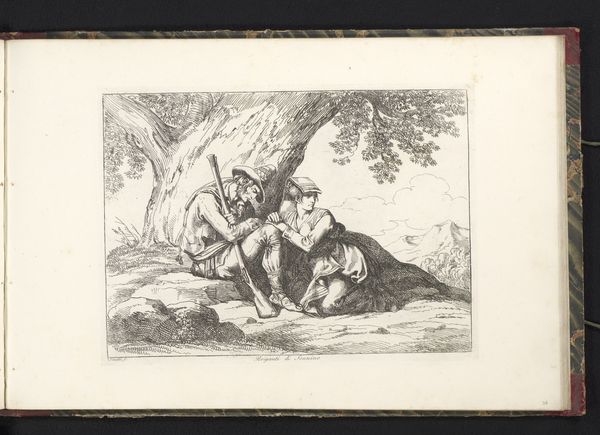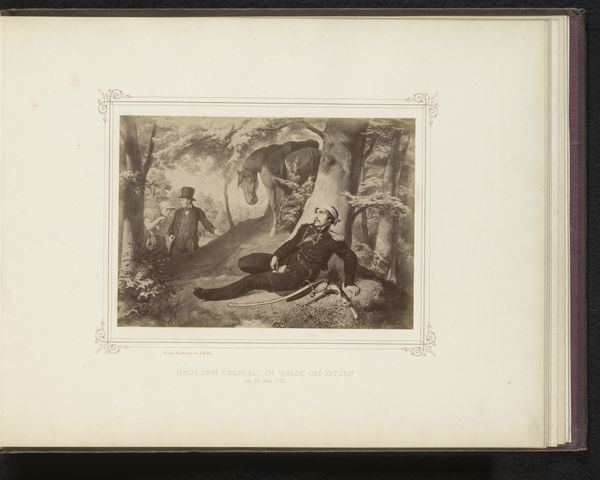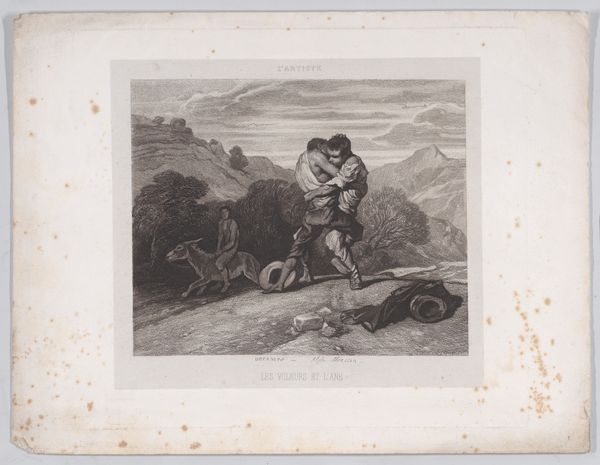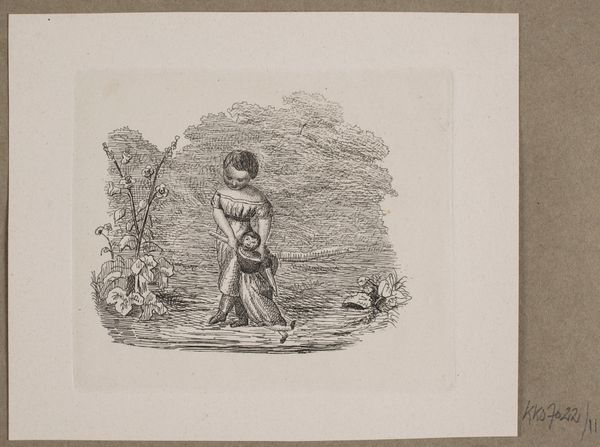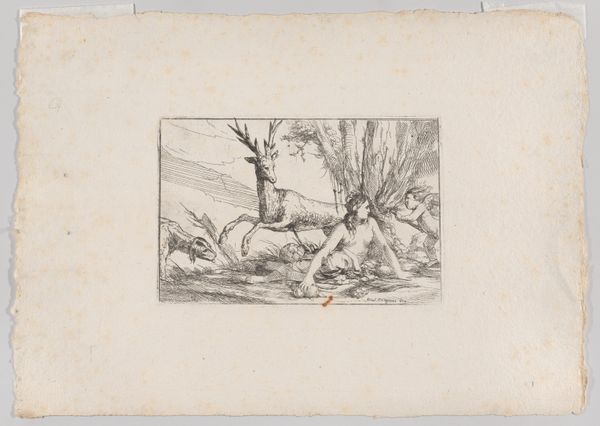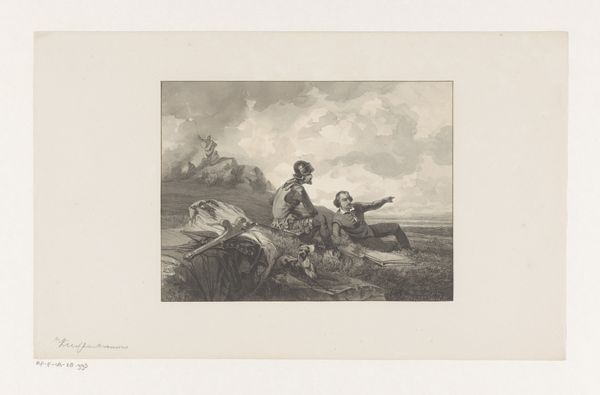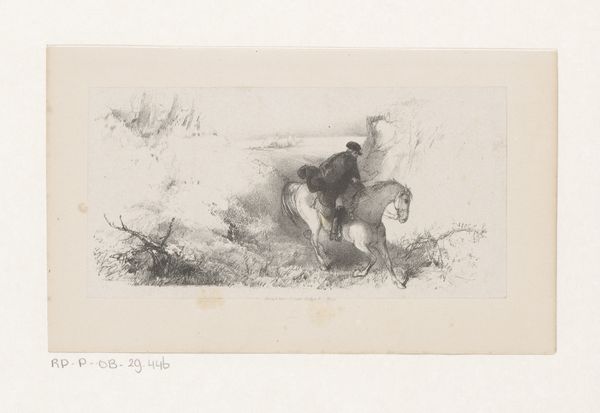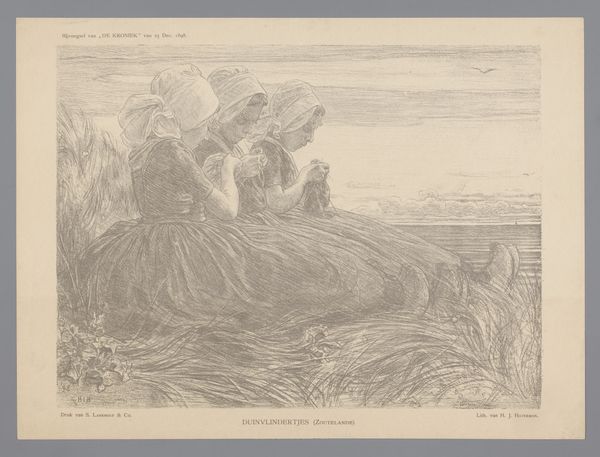
drawing, print, engraving
#
drawing
#
animal
# print
#
landscape
#
engraving
Dimensions: 88 mm (height) x 110 mm (width) (plademaal)
Curator: Welcome. Let’s explore Vilhelm Kyhn’s “Illustration til O. Specter, ‘Fabler for Børn,’” an engraving from 1838 currently held at the SMK. What are your first thoughts? Editor: It’s a sweet, idyllic scene, almost surprisingly gentle. Seals bask on what looks like an ice floe or rocky outcrop, under the watchful eyes of gulls or some sort of seabirds. The sharp lines of the cliffs create a contrast with the animals' soft forms. Curator: Kyhn was deeply invested in portraying the Danish landscape, particularly its relationship to national identity during a time of considerable political upheaval. His commitment involved illustrating children’s fables and instilling in young audiences a sense of national pride tied to nature. Editor: That makes perfect sense. Seeing it as an illustration now changes my perspective. What strikes me now is the power dynamic hinted at here; it presents the "natural" order of things, subtly teaching acceptable forms of domination and perhaps obedience to hierarchies within society. How might a child of the time understand their place within it through these representations of nature? Curator: Precisely. One must consider the social impact of art and illustrations on popular conceptions of natural space. What ideology is woven in the fable itself, as reinforced by visual depiction? I'm interested in how such scenes were intended to build and solidify the perception of what constituted the core of the Danish people’s character during the Danish Golden Age. Editor: It really prompts you to consider the public function of art. How do such images impact the cultural understanding of our environment? Do children still get this kind of narrative regarding nation and nature? Curator: Exactly! These visuals are also incredibly powerful as a social signifier in that era. Considering its cultural significance through that lens makes this piece richer in meaning. Editor: I concur. Looking closer allows a deeper recognition of its role. The work challenges us to consider the socio-political and national values ascribed during its creation and how it influenced even children's fables. Curator: Indeed. Its charm draws you in but its historical background leaves you with much to reflect. Editor: Certainly something to think about next time I pass by the children's section in the library.
Comments
No comments
Be the first to comment and join the conversation on the ultimate creative platform.

